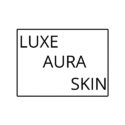When it comes to the ultimate anti-aging and acne-fighting ingredients, you’ve likely heard the terms “retinol” and “retinoid” thrown around. While they’re often used interchangeably, these powerful vitamin A derivatives are not the same. Understanding the key differences between them is crucial for choosing the right product for your skin’s needs and avoiding potential irritation.
Let’s break down the vitamin A family tree to clear up the confusion.
What Are Retinoids?
Think of “retinoid” as the umbrella term for all vitamin A derivatives. This family includes everything from the gentle, over-the-counter formulas to the potent, prescription-strength options. Retinoids work by binding to receptors in your skin cells, which signals them to regenerate more quickly. This process, known as cell turnover, is the secret to their success.
The benefits of retinoids are extensive and well-documented by dermatologists:
- Acne Treatment: They unclog pores, reduce inflammation, and regulate oil production.
- Anti-Aging: They stimulate collagen production, which diminishes the appearance of fine lines and wrinkles.
- Hyperpigmentation: They help fade dark spots, sun spots, and post-inflammatory hyperpigmentation.
- Improved Skin Texture: By promoting cell turnover, they smooth out rough skin and create a more even tone.
Prescription retinoids, such as tretinoin (Retin-A), tazarotene, and adapalene (Differin), contain a high concentration of the active ingredient, retinoic acid. Because they don’t require your skin to convert them into this active form, they are extremely potent and deliver fast, dramatic results.
What Is Retinol?
Retinol is a specific type of retinoid that you can purchase over-the-counter. It’s the most common and accessible form of vitamin A in skincare.
The key difference between retinol and its stronger counterparts lies in its mechanism of action. When you apply retinol, your skin must first convert it into retinaldehyde, and then into the active form, retinoic acid. This two-step conversion process makes retinol significantly less potent than prescription retinoids. It’s a milder, more gradual option that is often better tolerated by those with sensitive skin.
While it may take longer to see results, consistent use of retinol still provides impressive benefits. It boosts collagen, speeds up cell turnover, and improves the overall appearance of your skin over time.
How to Choose the Right One for You
Choosing between retinol and a prescription retinoid depends on your skin’s specific needs and your tolerance level.
Choose Retinol if:
- You are a beginner to vitamin A products.
- You have sensitive skin or are concerned about irritation.
- You want to address mild signs of aging, fine lines, or uneven skin tone.
- You are looking for a preventative anti-aging measure.
Choose a Prescription Retinoid if:
- You have moderate to severe acne.
- You have significant signs of aging, such as deep wrinkles or sun damage.
- You have used retinol consistently and are ready to advance to a stronger, faster-acting option.
- You have consulted with a dermatologist who has determined it’s the best course of action for your concerns.

Essential Tips for Using Vitamin A Products
Regardless of which you choose, the key to success is patience and proper application.
- Start Slow: Begin by using the product 2-3 nights a week to allow your skin to build tolerance. Gradually increase the frequency as your skin adjusts.
- Use at Night: Both retinol and retinoids can increase your skin’s sensitivity to the sun. Apply them in your evening routine.
- Always Wear SPF: This is non-negotiable. Sunscreen is essential every morning to protect your skin and ensure the product’s effectiveness.
- Moisturize: Combat dryness by applying a hydrating moisturizer before and after your retinoid or retinol application (this is often called the “sandwich” method).
In conclusion, both retinol and retinoids are invaluable ingredients for achieving healthier, more youthful-looking skin. The “right” choice isn’t about which is better, but which is a better fit for you. Start with a gentle retinol if you’re a beginner, and always consider a professional opinion before moving to a more potent prescription retinoid.
What do you think ?
Your opinion and ideas are important to me! On this page, you’ll find a selection of products organized into different budget categories – from affordable picks to high-end options.
Each item has been carefully chosen to help you make the best choice, no matter your budget. Have you tried any of these products, or do you think something’s missing? Feel free to leave a comment or share your advice – your input is greatly appreciated and helps other visitors too!
